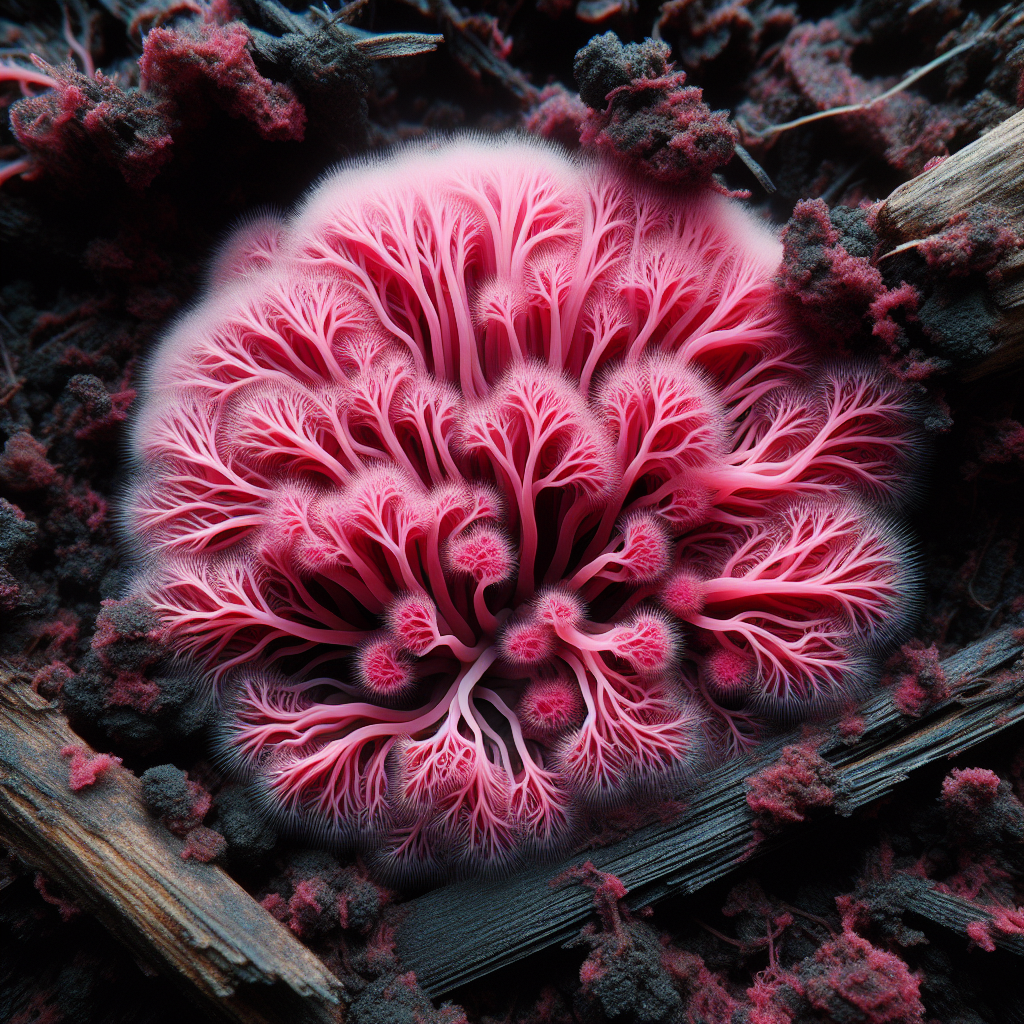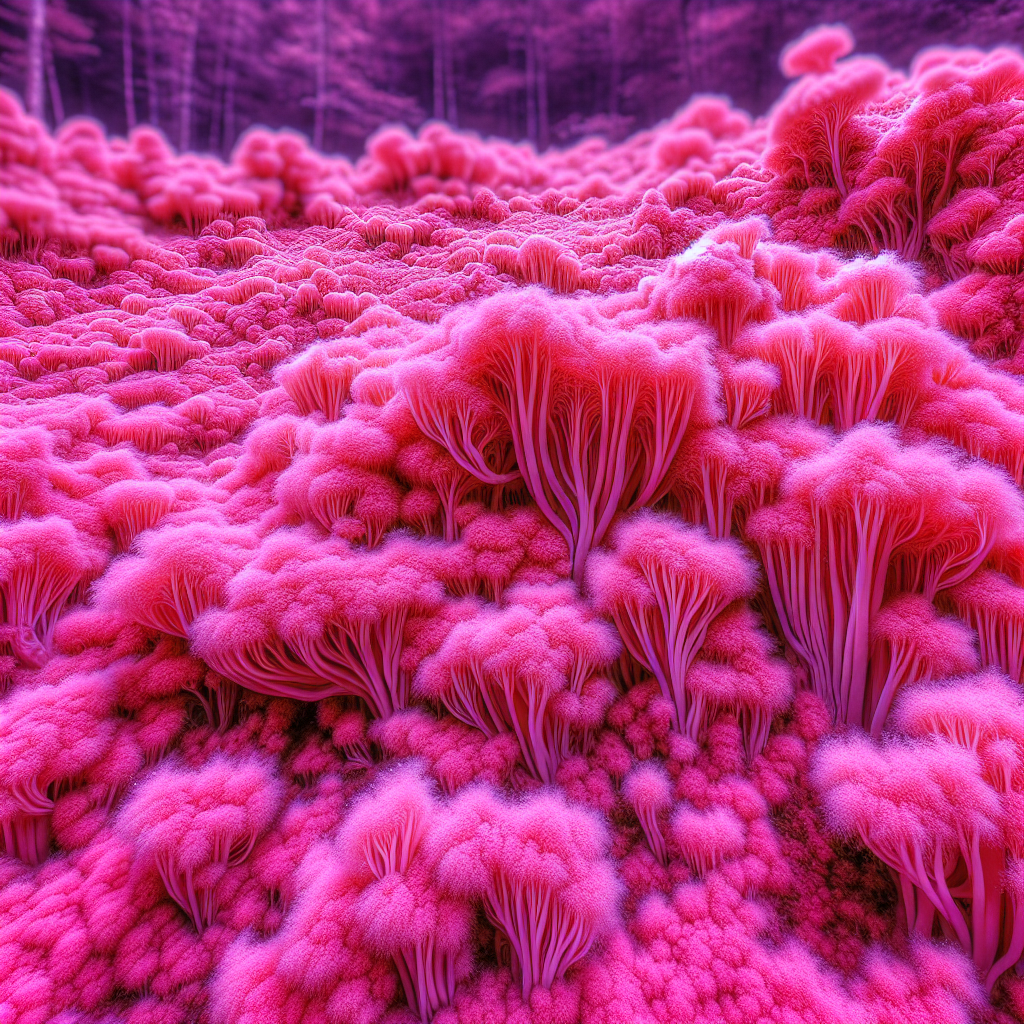In the realm of biology, few structures can match the intriguing mystery and beauty of pink mycelium. The article “Unraveling the Wonders of Pink Mycelium” puts the spotlight on this relatively unexplored science marvel, exploring its fascinating characteristics, functions, and potential applications that can effect astounding shifts in diverse fields like sustainability, technology, and healthcare. Prepare to journey into the captivating world of mycelium and discover just how much promise these pink networks of fungal threads have to offer to the future.

Understanding Mycelium
What is Mycelium?
Mycelium represents the vegetative part of the fungus, consisting of a mass of branching, thread-like hyphae. Through microscopic tubes called hyphae, they break down molecules into smaller molecules, aiding in nutrient absorption. Mycelium serves as the foundation of the fungi kingdom, upon which mushrooms and other fungi structures grow.
The Role of Mycelium in the Ecosystem
At the heart of every ecosystem, Mycelium plays a crucial role. It participates in the decomposition process of dead organic matter, transforming it into fertile soil, rich in nutrients. This enhances the soil’s capacity to retain water and minerals, positively contributing to overall ecosystem health.
Different Types of Mycelium
Mycelium can be categorized into different forms, based on their structures and their relationships with other organisms. The most common types are saprophytic, parasitic, and mutualistic mycelium. Each type holds a unique role within their habitat and has intricacies in its growth patterns, structure, and lifecycle.
Introduction to Pink Mycelium
What Makes Pink Mycelium Unique
Pink Mycelium is a particularly interesting form of mycelium, distinguished by its vibrant, unique coloration. This pink hue typically arises from specific pigments within the mycelium, contributing to its distinct appearance.
Where is Pink Mycelium Found?
Pink Mycelium is usually encountered in certain types of environments, particularly those with a wealth of decomposing matter. It can be found in diverse habitats, ranging from forests to grasslands and even in some urban settings.
Visual Characteristics of Pink Mycelium
As its name suggests, the most defining characteristic of Pink Mycelium is its color. Its vibrant, pink hues often cover the ground or decomposing material, creating a carpet-like appearance. Its texture can vary, but it is typically found as either cottony, powdery, or slightly granular masses.
Biological Makeup up Pink Mycelium
Genetic Aspects of Pink Mycelium
Pink Mycelium, like all organisms, possesses a unique genetic makeup. This genetic material dictates everything from its color to its growth patterns and its interactions with other organisms and the environment. The pigment responsible for its pink color is a primary result of these genetic factors.
Cellular Structure of Pink Mycelium
Pink Mycelium, like other fungi, is made up of tiny thread-like structures called hyphae. These hyphae sprawl and interconnect, forming a complex network. The pink coloration is typically uniformly distributed throughout the entire hyphal network.
Pigment Production in Pink Mycelium
The pigment production in Pink Mycelium is a fascinating process. The pink pigment is normally produced as a byproduct of its metabolic processes. Additionally, the color’s intensity can often vary, dependent upon environmental conditions and the presence of certain nutrients in its surroundings.
Life Cycle and Growth of Pink Mycelium
Development Stages of Pink Mycelium
The life cycle of Pink Mycelium consists of several stages, much like any other fungi. Starting from a spore, it germinates into a small thread of hyphae. This hyphae then matures, sprawling and branching out to form an extensive mycelial network, which can expand extensively in suitable conditions.
Conditions for Growth of Pink Mycelium
The growth of Pink Mycelium is influenced by several factors. Typically, it prefers damp, nutrient-rich environments with ample decomposing organic matter. Light, temperature, moisture, and nutrient availability can all significantly influence its growth.
Longevity and Survival of Pink Mycelium
Pink Mycelium is a durable and adaptive organism. It can survive in a variety of environmental conditions and can remain dormant under unsuitable conditions, waiting to resume growth once conditions improve. In terms of longevity, some mycelium networks can potentially live for hundreds of years if circumstances allow.

Ecological Role of Pink Mycelium
Pink Mycelium in Soil Health
Pink mycelium plays a significant role in maintaining soil health. As decomposers, they break down organic material into usable, accessible nutrients for plant life. This enriches the soil and boosts its fertility, promoting plant diversification and overall ecosystem health.
Pink Mycelium as Decomposers
As effective decomposers, Pink Mycelium is an essential contributor in the recycling of nutrients in its ecosystem. It breaks down complex molecules in dead organic matter into simpler forms that other organisms can utilize.
Pink Mycelium and Plant Symbiosis
Pink Mycelium often engages in symbiotic relationships with plants. Through a process named mycorrhizal symbiosis, pink mycelium forms a mutually beneficial relationship with plants. The mycelium absorbs water and essential nutrients from the soil and provides them to the plant. In return, the plant supplies the mycelium with sugars and other necessary compounds.
Beneficial Properties of Pink Mycelium
Nutritional Value of Pink Mycelium
Some types of Pink Mycelium are edible and may hold substantial nutritional value. Rich in fiber, protein, and essential vitamins, they may offer numerous health benefits.
Potential Medicinal Uses of Pink Mycelium
The unique properties of Pink Mycelium are being researched for potential medicinal uses. Certain types of mycelium have been observed to assist the human immune system and serve an anti-inflammatory and even anti-cancer properties.
Pink Mycelium in Environmental Sustainability
Pink mycelium, like other mycelium types, can contribute towards environmental sustainability. Helping in decomposition, it reduces waste and replenishes soil fertility. Mycelium’s capability to bind soil helps prevent erosion and play a significant role in carbon storage, contributing to the mitigation of climate change.
Challenges in Cultivating Pink Mycelium
Difficulties in Growing Conditions
Cultivating Pink Mycelium can be challenging, requiring a delicate balance of specific conditions. These include the necessary temperature, humidity, light exposure, and nutrient source. Any slight variations can result in poor growth or even the death of the organism.
Genetic Manipulation Challenges
While genetic manipulation of Pink Mycelium has potential promise in various fields, it presents its own set of challenges. These include the technological hurdles involved in the genetic manipulation and the ethical considerations of such practices.
Issues in Harvesting and Sustainability
While Pink Mycelium could be a promising source of sustainable resources, challenges remain in developing a sustainable and efficient harvesting method. Challenges include ensuring the ongoing viability and health of the Pink Mycelium, along with determining ways to harvest it without disrupting the surrounding ecosystem.
Exploring the Potential for Human Use
Pink Mycelium in Food Industry
With its high nutritional value, Pink Mycelium has potential applications in the food industry. It could serve as a valuable nutrient source and may even be used as an ingredient in alternative protein products.
Potential Industrial Applications of Pink Mycelium
Beyond food, Pink Mycelium holds potential promise in a variety of industrial applications. This includes packaging materials, organic compost, and bio-remediation.
Pink Mycelium in Medicinal Research
Given their potential medicinal uses, Pink Mycelium is being heavily researched in the medical field. Researchers aim to unlock potential therapeutic applications, exploring possibilities ranging from boosting the immune system to fighting cancer.
Current Research and Advances on Pink Mycelium
Leading Studies on Pink Mycelium
There have been numerous significant studies on Pink Mycelium in recent years. These studies delve into various facets of Pink Mycelium, ranging from its basic biology to its potential uses in wide-ranging fields.
Emerging Theories and Discoveries
As research on Pink Mycelium continues, numerous new theories and discoveries are regularly emerging. These discoveries continue to deepen our understanding of this intriguing organism, along with its potential applications in areas ranging from agriculture to medicine and environmental sustainability.
Future Prospects of Pink Mycelium Studies
Given the ongoing research and emerging discoveries associated with Pink Mycelium, the future prospects of Pink Mycelium studies appear promising. From new therapeutic applications to potential innovations in sustainable living, the potential possibilities are vast and exciting.
Raising Awareness and Ethical Considerations
Role of Education in Understanding Pink Mycelium
Education carries a crucial role in deepening our understanding of Pink Mycelium. Public awareness and understanding of this organism can lead to potential growth in research possibilities and acceptance of its applications.
Ethical Debates Surrounding Pink Mycelium Use
Despite the potential benefits of Pink Mycelium, ethical considerations arise concerning its use. These include its cultivation, potential in genetic manipulation, and harvesting while ensuring the protection of natural ecosystems.
Conservation Efforts for Pink Mycelium
Ensuring the conservation and protection of Pink Mycelium is vital, given its ecological importance and potential benefits. This requires precise regulation, monitoring, and protection efforts to maintain its viability for future generations.
